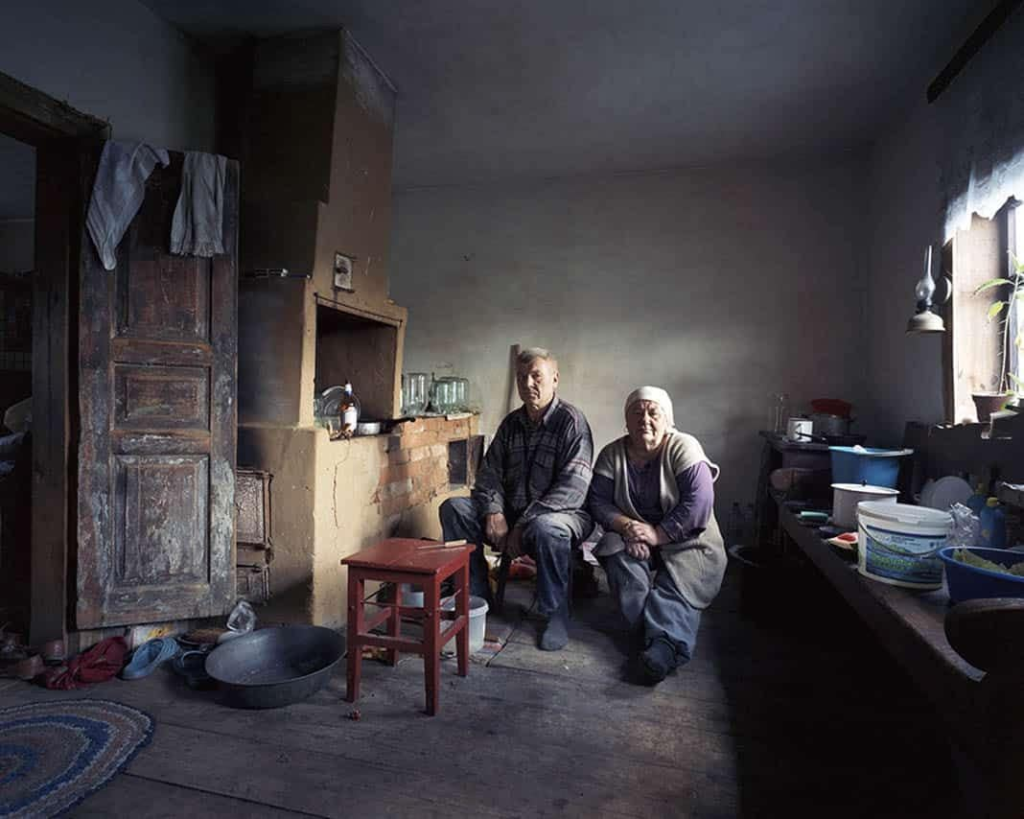Emotional Response
Technical – how was the photo taken
Visual -what can we see in the image
Conceptual – why was the photo taken / presented
Contextual – who, when, where etc…the story, background, impact
Emotional Response-At fist glance the photograph makes me feel unsteady and conscious, alert that something bad may happen. the image is very similar, because of the setting and colour, to ones one might see in an action movie, when a fight is happening. the man in the photograph, although I yet know not much about, seems in control, giving a sense that he has power. the colours give a dramatic tone to the image making me feel repulsed and uncomfortable as I feel like in an a place where I don’t belong. This photograph is the opposite of what calm and welcoming, and I think there’s a reason behind that.
Visual –As an environmental portrait, this photograph has a major element of not only the person in the foreground, but the environment in the background. the man being the main focus in the photograph, is positioned right in the middle, in the lower half of the image. he is in a place that seems like an old train station, because of the tracks and train wagons behind him, but this place also looks like a factory, perhaps a train factory definitely not open to the public as it seems secretive. the are a lot of lighting in this train station, however most of the lighting is focused onto illuminating the background rather than the man. as the image is quite dark itself, the man seems more ominous with very controlled lighting only falling onto the sides of his face. his figure is silhouetted as not much lighting shows of his identity, but I can see his eyes looking directly into the camera’s lens, with his hands bellow his chin. he is sat on the seats of the train station and is looking intensely at the camera with a blank expression. as he is wearing a suit he seems like a man of great power and high status. other things that I notice are the pillars onto each side of the man and a ruffed edge of them at the top of the image, above the mans head.
Technical – as the man is the main focus, he is positioned in the middle of the photograph. the photograph has a lot of symmetry , with the pillars on each side being exposed by the same amount, the lights being directly above the man, and the 2 train wagons being opposite each other, all this creates a sense of belonging an balance. The man himself also is a part of this symmetry, his body position is shaped like a pyramid and even his hand create a tringle, this triangle is also visible opposing the man, as the light above him also create a tringle shape as they lead back. This also creates depth in the photograph, giving an impression that everything is leading to the man, which is the main focus. What the photographer might of found difficult when creating this photograph, is controlling the lighting, as behind the man, the environment is quite bright however the foreground is the opposite of that. there is sharp lighting on the mans face, from either side this might have been controlled by the photographer, but if it was then he intentionally wanted to show that this man is important and make people scared of the power he holds.
Conceptual and Contextual – Arnold Newman, being the photographer, was Jewish, “As a Jew, it’s my own little moment of revenge.”, he wanted revenge for what Alfred Krupp was responsible for, during the WW2. The WW2, lead by Adolf Hitler, which killed around 6 million Jews and many other groups during the Holocaust, like communists, Jehovah witness, gay men and socialists, happened from 1939 to 1945. Whereas this image was taken after the war in 1963. Alfred Krupp was a big figure responsible for the transportation of recourses through a family company, known formally as Friedrich Krupp AG Hoesch-Krupp, a key supplier of weapons and materiel to the German Government and a big help for Hitler during the war. He went through a trial due to Krupp’s wartime employment of slave labour. He served in prison only 3 years. “It was my impression of a Nazi who managed to survive yet killed millions of people” he said. he wanted to place Krupp against an industrial backdrop.
Overall Arnold Newman wanted to show Alfred Krupp in a way that makes the public aware of the man for what he did, he showed him in this specific way, like the environment, lighting, position etc., to make him represent the cruel things he was able to do because of power. This is the reason why even without knowing the context of the image or any history or meaning to why it was taken, the viewer can still develop a meaning in their mind which will be influenced by how Alfred Krupp was represented in this image.


















































